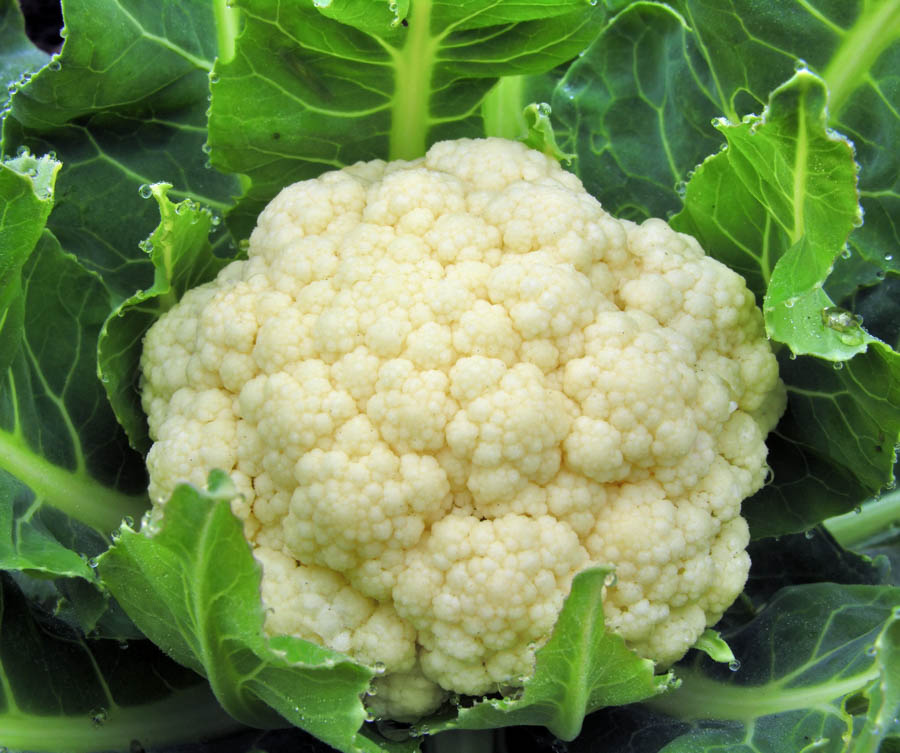Cauliflower: 6 Tips for Success

GardenZeus receives commissions for purchases made through links in this post.
Although cauliflower has a reputation as being one of the more difficult vegetables to grow and is certainly vulnerable to both hot and cold temperature extremes, it can be grown successfully. GardenZeus expert Darren Butler recommends that you give it a try, despite its reputation for difficulty. The following are his tips for succeeding with cauliflower:
1) Select appropriate varieties. If you have had poor results with cauliflower, try varieties that tolerate both heat and cold, such as the hybrid Casper.
2) Grow cauliflower in rich, fertile soil. Brassicas are moderate to heavy feeders and need sufficient macronutrients and micronutrients.
3) Timing: Start consider starting seeds indoors in ideal germinating conditions for later transplant outdoors during ideal growing conditions.
4) Transplanting tips: Transplant seedlings during the first 5 to 10 weeks while they are still growing actively; don’t let them sit in their cells or small pots long enough that they become rootbound and senescent. Transplant cauliflower deeper than seedlings were in cells or pots to protect the root crown.
5) Start seeds and grow transplants in fertile, living, consistently moist soil that is loose and friable to at least 6 to 12 inches in depth. Grow in full sun during cool weather. Provide shade during unseasonable heat waves.
6) Plant cauliflower (and other brassicas) away from most other garden vegetables and most other plants in general. Brassicas do not form the relationships with the mycorrhizal fungi that are so helpful to many garden vegetables. The miraculous work of micorrhizae for garden vegetables that you may have heard or learned about might be at the expense of your cauliflower and other brassicas. Mycorrhizae may be capable of colonizing brassicas and “stealing” nitrogen from them to provide it to other garden vegetables. GardenZeus expert Darren Butler generally recommends that cauliflower and other brassicas be grown separately and at a distance of at least several feet from other vegetables, with 20 to 30 feet or more being ideal.
Single dig or double dig soil to loosen to a depth of at least 12 inches, remove stones and obstructions, and add compost or well-rotted organic matter shortly before planting cauliflower.
GardenZeus recommends planting cauliflower from purchased transplants, especially when attempting to grow it for the first time or if you have not succeeded previously with cauliflower, but it’s critical to be sure that varieties are appropriate for your growing conditions (nurseries might not always offer appropriate varieties for their local areas) and to check that individual plants are not diseased, rootbound, or senescent.
When transplanting, spread roots of seedlings gently outward and downward to encourage a deep, spreading root system. While some experts recommend tearing off excess roots at transplanting, at GardenZeus, we prefer to minimize damage to seedling roots during transplant. Plant slightly deeper than the level at which starts were in packs or pots, and tamp soil gently. Water immediately after transplanting.
Start cauliflower seeds indoors about 4 to 8 weeks before transplants are needed. Starts may need to be transferred to larger pots or growing containers at least once before being transplanted outdoors, or germinate seeds from the beginning in larger 3-to-4-inch planting pots.
Broadcast seeds or plant individually directly outdoors during appropriately cool weather. Plant seeds about ¼-inch deep. While maturing cauliflower plants need temperatures in the 60s to form the best curds, seeds germinate best at warmer temperatures of 70° to 85° F, and they have a long seedling period of about 4 to 10 weeks. Seeds must be kept moist for germination, which may require misting or watering with a gentle, fine spray 2 or more times per day.
GardenZeus has customized growing information by plant and zip code. To get started, enter your zip code here.
GardenZeus has detailed growing instructions for many vegetables, herbs and annuals ideal for fall planting in Southern California. For ideas see:
Growing Garlic in the California Home Garden